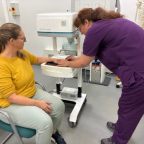
Is Your Commute Bringing Bed Bugs Home?
Bed bugs have a notorious reputation for infesting hotels, bedrooms, and used furniture. But one often-overlooked threat is lurking in plain sight: your commute. Whether you take the train, ride a bus, or grab an Uber to work, your daily journey might be the very reason you’re unknowingly bringing bed bugs home.
Let’s explore the top 5 ways your commute could be putting your home at risk—and what to do about it before a minor nuisance turns into a major infestation.
1. Public Transportation Can Be a Bed Bug Hotspot
Subway seats, bus cushions, and even fabric walls in trains can harbor pests like bed bugs. With thousands of passengers cycling through these vehicles daily, it only takes one infested rider to spark a chain reaction.
Unlike fleas or lice, bed bugs don’t live on humans. But they are expert hitchhikers, clinging to clothing, purses, laptop bags, and jackets with ease. If you’ve ever set your belongings down on a subway bench or leaned against a soft bus seat, you may have unknowingly picked up an unwanted passenger.
Once inside your bag or clothes, a bed bug’s next destination is often your bedroom. That’s when the real trouble begins. Unfortunately, traditional cleaning or spraying methods often fall short—especially if the bugs have already scattered into mattresses, electrical outlets, and cracks in your walls. That’s where bed bug heat treatment becomes the gold standard, reaching every nook and cranny to wipe out infestations for good.
2. Rideshares and Taxis Aren’t Immune Either
Think you’re safe because you don’t use the subway? Not necessarily. While public transportation gets a bad rap, rideshare vehicles and taxis can be equally risky. These cars see dozens of passengers every day, and drivers may not even realize a passenger was carrying bed bugs.
Bed bugs are drawn to warmth and the smell of humans, and a busy car is full of both. The fabric upholstery in most vehicles provides plenty of small crevices for them to hide between pickups.
Unlike traditional public transport, rideshare vehicles aren't subjected to regular sanitation inspections, so infestations can go unnoticed. If you toss your backpack or coat onto a rideshare seat that’s already infested, those bugs could end up right in your home within hours.
3. Your Office Could Be Feeding the Infestation
Bed bugs are equal opportunity invaders. They don’t care how clean or modern your office is—they just need a warm environment and access to humans.
If someone else in your workplace has an infestation, it can easily spread to soft chairs, shared couches, coat closets, and even carpeted conference rooms. Once inside the building, bed bugs quietly move from person to person, hiding in laptop bags, shoes, or coats left in common areas.
Many people bring the bugs home via their personal items, not realizing that the source is their office. The infestation then spreads to bedrooms, and even worse, returns the next day as you carry the bugs back into your commute and office.
This back-and-forth movement is why addressing only the home is rarely enough. Smart bed bug prevention strategies require a wider lens—including the spaces you frequent every day.
4. Your Bags and Belongings Could Be Trojan Horses
The things you carry—backpacks, laptop bags, gym totes, coats, and scarves—are some of the most common ways bed bugs sneak into homes. Once inside your belongings, they patiently wait until nightfall to emerge and feed.
That’s why you should treat your daily gear with caution. Avoid placing bags on upholstered public seating or carpeted office floors. When you get home, consider isolating these items away from your sleeping areas. Some people go so far as to store work bags in plastic bins or clean them regularly with steam or heat.
For those dealing with an ongoing infestation, whole-room heat treatment is one of the most effective methods to eliminate bed bugs at every life stage. This treatment goes beyond the surface, ensuring that any hidden bugs in furniture or personal items are completely eradicated in a single session.
5. You Could Be Re-Infesting Yourself Without Knowing It
One of the most frustrating realities of bed bug infestations is how easily they can be reintroduced—especially if your commute remains unchanged. You may have treated your home, replaced your mattress, and deep-cleaned every fabric item you own, only to find bites returning a few weeks later.
Why? Because if the original source of the infestation is your daily commute, you’re essentially re-exposing yourself every single day.
To truly eliminate the problem, you must treat both your living space and prevent future transfer during your commute. That often means changing habits, inspecting gear regularly, and working with professionals who understand how to spot and eliminate every hiding place these bugs exploit.
Ready to Break the Commute-to-Home Infestation Cycle?
Commuting might be unavoidable—but bringing home bed bugs doesn’t have to be. Whether you ride the train, carpool, or spend your mornings in a crowded office, being informed is the first step in protecting your home.
If you’ve been noticing bites, rusty stains on your sheets, or strange odors in your bedroom, don’t waste time with guesswork or half-measures. It’s time to bring in professionals who can help you shut the door on infestations—before they settle in for good.
Take action now. Because while you can’t always control where you go during the day, you can control what follows you home.

















